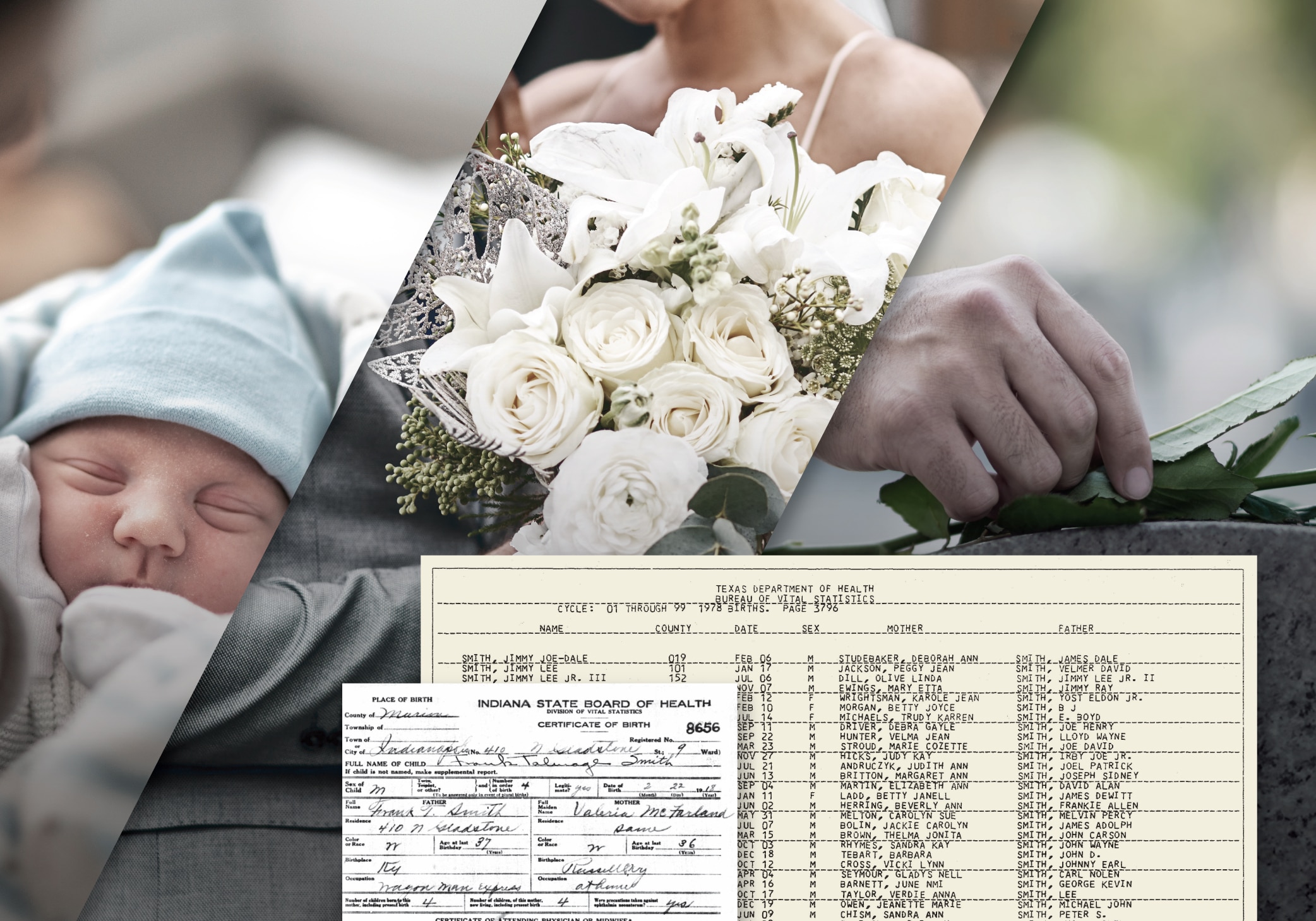Ancestry® Family History
Vital Records
Vital records are civil or government documents created for a birth, death, or marriage. These events have always been defining moments for families, often surrounded by cultural, religious, and social customs that span generations. For family historians, birth, marriage, and death locations and dates are the basic building blocks of a family tree. They help to identify family and find clues that can lead to more rich details about ancestors’ lives.

The Vital Statistics System in the U.S.
All the states—and a few U.S. cities and territories—have a bureau or department of vital and health statistics, which oversees the creation and distribution of birth, marriage, and death (BMD) records. While some states kept vital records for years at the city or county level, most states did not start consistently keeping uniform vital records until the early 1900s, as a way to track American mortality rates.
In 1953 the National Office of Vital Statistics was created as a way for the federal government to collect and publish national vital statistics. It was a precursor to today's Centers for Disease Control and Prevention (CDC) and the U.S. Department of Health and Human Services (HHS).
What Vital Records Can Tell You About Your Family Story
Birth, marriage, and death records are crucial to learning more about your ancestors and their life stories—particularly for your family who lived during the last 100 years, when civil authorities began standardizing vital records. These records are full of personal details that not only paint a more vibrant picture of their lives but can also lead to additional family history discoveries.
Birth Records
Birth records are usually created at the birth of a child by the medical professional who delivered them. The U.S. Standard Certificate of Live Birth gives the name, birth date, and birthplace of the child, mother, and father, as well as each parent’s race and level of education. It may also note the number of previous deliveries, including living and deceased children, for the mother.
Even if your ancestor was born before standardized records started becoming the norm, you may still be able to find legal documentation of their birth, as some states created delayed birth certificates. These certificates allowed individuals born before the process of civil registration of births was formalized to apply for a birth certificate—usually as proof of birth for Social Security or passport applications.
For these delayed birth certificates, the applicant had to supply supporting evidence of their birth—and all kinds of interesting records were used. A few of the fascinating records that could show up in a delayed birth certificate application include grade school records, lodge memberships, neighbor affidavits, and insurance policies.
Marriage Records
Marriage records have the longest and most consistent history of the three types of vital records, because marriage had legal ramifications with inheritance, property, and legitimacy. The U.S. Standard Certificate of Marriage lists the bride and groom's name, residence, date and place of birth, and both parent's names and places of birth, including their mother's maiden name. It also has information about the bride and groom’s race, the highest grade completed, if they had been previously married, and if so, what ended the marriage (death, divorce, or annulment).
Death Records
Death records catalog the end of someone's life and can also have lots of rich detail. In addition to the name, they can include place and date of birth, occupation, marital status, residence, and parents' names. They can also have details like date and place of death, burial date and place, and the name and residence of the informant who provided the details.
Death certificates can also provide clues about family health history, as they list the cause of death. This can be valuable information for some inherited health conditions that can get passed down over generations.
Find the Vital Stories in Your Family Tree
It's easy to relate to how life-changing the birth of a child, the marriage between two sweethearts, or the death of a loved one is. These events become cornerstones of our lives. They link families together and can answer the question, "Where did I come from?" in a powerful way. While finding vital records is an exciting part of family history sleuthing, it's also a part of your family's story—and ultimately you. You never know what vital part of your heritage you will discover until you look. Search Birth, Marriage, and Death records on Ancestry® today.